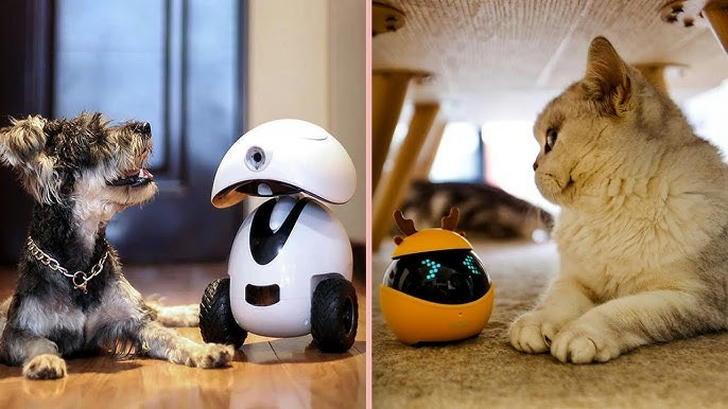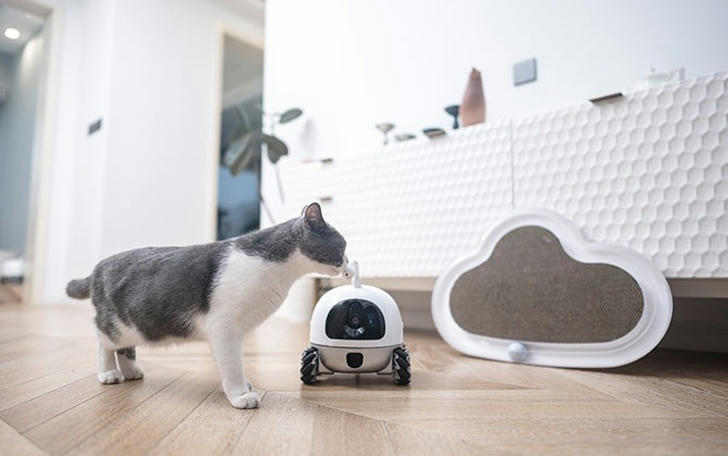Meet the Smart Pet Robots Keeping Animals Happy at Home
In 2025, our lives are more intertwined with technology than ever before—and our pets are no exception. With busy lifestyles, remote work schedules, and increasing concerns about pet well-being, smart pet robots have emerged as a groundbreaking solution. These intelligent companions are not just futuristic novelties; they’re changing the way we care for and interact with our animals when we’re away or even at home.
From automatic feeders that learn your pet’s eating habits to robot toys that play fetch on command, this new wave of smart technology is designed to enhance pet health, stimulate mental activity, and provide companionship. Let’s explore how smart pet robots are revolutionizing animal care in the home.
1. What Are Smart Pet Robots?
Smart pet robots are automated devices equipped with artificial intelligence (AI), sensors, cameras, and often mobile apps. Their purpose is to assist with daily pet care tasks, offer interactive engagement, and monitor pet health—all without constant human supervision.
These devices can include:
- Interactive play robots that mimic pet behaviors
- Automatic feeders that dispense food based on a schedule or diet plan
- Pet monitoring cameras with two-way audio and treat dispensers
- Robot companions that offer social interaction to prevent loneliness
Many of these devices are connected to mobile apps, allowing pet owners to check in, control settings, or even play remotely with their furry friends.

2. Why Pet Robots Are Gaining Popularity in 2025
Several societal and technological shifts have accelerated the rise of pet robotics:
- Busy lifestyles: Whether you're working long hours or traveling, robots ensure your pets are fed, played with, and monitored.
- Urban living: In apartments or small homes, pets can become bored. Robotic playmates keep them stimulated.
- Loneliness in pets: Animals, especially dogs and cats, crave companionship. Robots reduce feelings of isolation.
- Aging population: Older adults with limited mobility benefit from robots that assist with pet care.
- Smart home integration: These robots now easily connect with devices like Alexa, Google Home, and smart security systems.
3. Top Smart Pet Robots in 2025
Here are some of the most popular and innovative smart pet robots making waves in 2025:
a. TOMO Pet Companion
This sleek, ball-shaped robot uses AI to interact with dogs and cats. It can roll around, emit laser pointers, and respond to pet behavior. With built-in scent capsules and voice recordings, TOMO can simulate a more “human-like” presence.
b. PetBot 360
An all-in-one monitoring system with a mobile-controlled camera, treat launcher, and voice interaction. PetBot 360 can recognize your pet’s face and behavior, sending alerts if it detects stress or irregular activity.
c. Mookie Feeder AI
More than just an automatic feeder, Mookie uses data from your pet’s activity level and health records to adjust portion sizes and feeding times. It even connects to pet fitness trackers to optimize nutrition.
d. Furbo 3.0 with Emotion Sensor
This upgraded version of the popular pet camera uses emotional recognition technology. It analyzes facial expressions and body posture to gauge your pet’s mood and sends suggestions to the owner, like “Time for a walk” or “Your dog seems anxious.”
4. Benefits of Smart Pet Robots
a. Mental Stimulation Smart toys and robots keep pets mentally engaged, reducing destructive behaviors caused by boredom.
b. Routine and Consistency Pets thrive on routine. Robots deliver food, exercise, and interaction on a consistent schedule—even when humans are away.
c. Health Monitoring With features like weight tracking, movement detection, and even poop analysis, some robots help identify health problems early.
d. Remote Interaction Owners can talk to their pets, play fetch, or toss treats via their smartphones, creating a sense of closeness from miles away.
e. Behavioral Training Some smart robots offer training modes, helping reinforce good behavior with positive feedback, sound cues, or treats.
5. Challenges and Considerations
While the benefits are clear, smart pet robots come with considerations:
- Cost: High-end pet robots can range from $200 to over $1,500, depending on features.
- Tech maintenance: As with any device, updates, charging, and occasional repairs are part of the experience.
- Not a substitute for humans: Robots provide interaction but don’t replace the emotional bond between pet and owner.
- Pet adaptation: Some pets might be wary or scared of robots at first and may need time to adjust.
To ensure success, it’s important to choose a device that matches your pet’s personality, energy level, and your lifestyle.
6. The Science Behind It: AI + Animal Psychology
Behind the fun exterior of pet robots is serious science. Developers work closely with animal behaviorists to create engaging, non-threatening interactions. For instance, movement patterns are often designed to mimic prey behavior, triggering natural instincts in cats. For dogs, auditory signals and scent dispensers simulate human interaction.
The incorporation of AI means these robots can learn and adapt. If your dog ignores the laser pointer but loves chase games, the robot will adjust its play mode accordingly. This learning loop helps maintain long-term engagement.
7. The Future of Pet Robotics
As robotics and AI continue to evolve, future smart pet robots will likely feature:
- Emotion-based responses using biometric sensors
- Speech recognition, allowing pets to respond to vocal commands
- Advanced health diagnostics, such as temperature and heart rate monitoring
- Integration with veterinary services, enabling automatic sharing of behavioral data with professionals
Eventually, pet robots may function almost like a virtual veterinarian assistant, constantly monitoring your pet’s well-being in real time.

Conclusion: Smarter Homes, Happier Pets
Smart pet robots aren’t just a trend—they’re becoming an essential tool in modern pet parenting. In 2025, they offer a reliable, data-driven, and interactive way to ensure pets are mentally, physically, and emotionally well even when life gets hectic.
Whether you’re a tech enthusiast, a busy professional, or just someone who loves your pet deeply, embracing this technology can make your home more responsive, your pet more fulfilled, and your relationship with your furry friend even stronger.
After all, when your pet is happy, your home feels more complete—and thanks to robots, that happiness is now just a button (or a bark) away.
